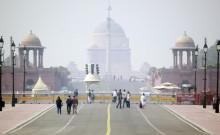
The rosy picture of the Indian pharmaceutical companies in developed markets such as the U.S., Europe and Japan is beginning to fade and the firms would have to step up to survive in the competitive environment, research agency Crisil said in a report on Tuesday.
The report said that the Indian pharma exports growth is slated to decline to 10-12 percent annually over the next five years, compared to a growth of 19 percent it registered over last decade.
The Indian drugmakers have been making cheaper, generic versions of drugs and account for 16 percent of the $800-billion U.S pharma market.
"The generic medicine exports, which have been the growth engine for the Indian pharma industry, is witnessing a decline in growth mainly because the value of drugs going off patent is declining even as pricing pressures, are increasing," the report said.
The annual sales growth of generic drugs in the U.S., the largest generics market, is seen slowing to 8 to 9 percent over the next five years, and decelerate even more after that. Therefore, for growth to sustain beyond 2020, domestic companies will have to step up investments in new molecules and draw up a roadmap to deal with lower generics growth, the Crisil report added.
The Indian pharma companies cannot rely on the exports of generic medicines alone, especially when the competition is increasing and would have to consolidate their research and development (R&D) activities to bring new drugs in the market.
"Sharper focus on innovation and R&D has become an imperative. Our analysis of new drug applications (NDAs) approved by the U.S Food and Drug Administration (USFDA) reveals that Indian companies got approvals for just 26 products between January 2006 and June 2015 – a fraction of the 840 garnered by global pharmaceutical companies. Their global generic competitors such as Teva and Mylan had 48 and 33 NDAs to their credit as of February 2016," Ajay Srinivasan, director at Crisil Research, said.
An NDA is an application filed before the regulator to sell new drugs after clinical trials and research.
Even for generic medicines, which are copied and cheaper versions of drugs, the Indian pharma companies face stiff competition from the MNCs. The Indian generic firms relied on process chemistry skills, which helped them clone drugs going off-patent by tweaking their molecules and low-cost manufacturing.
But competition has been intensifying, particularly for the large players, because of the huge number of abbreviated new drug applications (ANDAs) being filed with the USFDA, including by mid-sized domestic ones, the report said.
An ANDA is a filing before the regulator to get then approval for selling generic medicines.
In the face of growing competition, the report said that Indian drug companies would need to spend more on the R&D to come up with the new drugs in market. Current R&D spending by the Indian firms is dismal, according to Crisil.
Indian companies have indeed increased their R&D spend and it has risen to 6.5 percent of revenue in fiscal 2015 from 3.8 percent a decade ago. However, this pales in comparison with global pharma firms, who spend close to 16 percent.
The report said that even though 34 Indian companies are in the process of developing new products, which are in various stages of clinical development, none has launched a new molecule in a regulated market such as the U.S.








